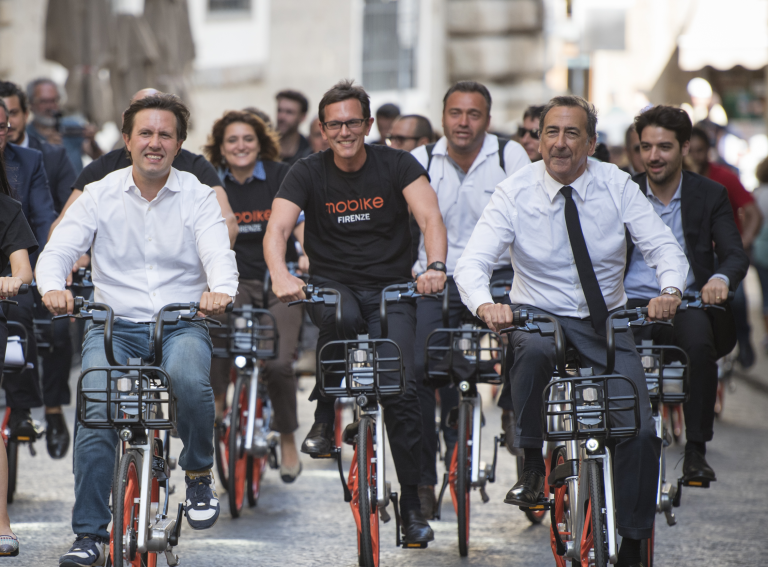Global analytics platform Anadue has launched a new revenue generating model for shared micromobility operators and local landowners dubbed ‘Anadue SmartSpaces’.
The best part of the model? The rider benefits too.
Zag: How does SmartSpaces work?
MM: “Operators can increase their revenue streams by creating customised services with local businesses such as hotels, restaurants, public transport operators, and councils. Trips that start or end in predefined small areas within a larger market can be treated differently. This allows us to create specific pricing rules and SLAs that mutually benefit the business and the operator.
“For example, an operator could provide e-bikes or e-scooters at a discounted price for riders at a shopping mall and the shopping mall would pay the operator to make those vehicles available. The advantage to the shopping mall is it would attract new customers with this cheaper and more fun mode of transport, while the advantage to the operator is it gets a new revenue stream without increasing its operational costs. It offers many of the benefits of a private fleet, with none of the additional costs. Micromobility is a service that’s been quite isolated from its environment, and this is a way to integrate it with local businesses and transport by allowing customised service agreements with those operators.”
Zag: What other types of incentives do you plan to offer riders, besides discounted trips?
MM: “The first phase is to establish a relationship between the operator and landowner. Phase B will be to create new incentives – this could be a discount voucher advertised in the shared mobility app for say a half price latte from the mall.”
Zag: This feels like an extension of dynamic pricing, which offers specifically discounted rides to incentivise customers to move vehicles to and from certain locations. Was dynamic pricing behind the thought process of this new business model?
MM: “Yes, it’s an incentive for riders to do something besides just take the trip. Every trip has a purpose, and we want to be able to contextualise the trip with its purpose. If the purpose can be monetised in a way which doesn’t prejudice the rider, then that’s great. This new approach of creating partnerships can also be used to better integrate micromobility into public transport. There’s a huge opportunity for operators to cooperate with train operators, bus operators, and tram operators by creating special pricing in locations that have a large number of people arriving and leaving. It’s very important that this not only increases revenue for the operator, but it also increases connectivity to local businesses, and works towards the larger purpose of improving the environment.”
Zag: How else can SmartSpaces be used to directly improve the environment?
MM: “The product can be tied into local data sources such as air quality and traffic congestion. For example, areas which have poor air quality like intersections on highways can be defined into zones and then SmartSpaces can be applied to encourage people to use electric vehicles there by offering a discounted price. This would get them in and out of the area quickly, reduce pollution, and also reduce their exposure to poor air quality and associated health problems.”
Zag: What was the origin of SmartSpaces?
MM: “Anadue is very fortunate to have Hoppy as a customer. Hoppy are a very innovative operator and we frequently have calls to discuss new ideas. They often ask us if something is possible, and we’re excited to investigate. It was Hoppy’s idea to link the pricing of their e-scooters in specific places to air quality measurement in order to make their proposal to operate in Brussels unique and innovative. They also asked if we could treat scooters within a hotel’s grounds differently to other scooters in the same town. Although we’ve often already thought about these types of solutions, without a customer willing to put them into commercial service, they struggle to get beyond the demo stage. We take Hoppy’s requests as the seed to develop an even more innovative product for the global market.”
Zag: Can you give us an example of how this business model is being applied in the real world?
MM: “Hoppy will have a number of different areas including hotel zones to monitor the utilisation of a private area around a hotel. The hotel can monitor key performance indicators which we collect such as how many trips take place to and from the hotel, and when, and then a commercial conversation can happen between the hotel and Hoppy. We provide the facility for Hoppy to be able to do this and we’re opening a new potential revenue stream that doesn’t currently exist without us. Ultimately, one party will set a maximum and a minimum tariff for trips in that area and then we use our proprietary algorithms to select the correct price to maximise profitability.”
“Hoppy has a partnering program to work closely with local businesses and local governments. Now we can adjust the pricing of trips based on fully customisable zones and a wide range of environmental inputs, we can create new products that generate new revenue streams, appeal to more riders and solve multiple urban challenges.”
Hoppy CEO Kenny Vercruysse
Zag: How significant could SmartSpaces be for shared operators globally to improve their bottom line?
MM: “The opportunity is absolutely massive. A shopping mall attracts thousands of people a day. A train station could be tens of thousands. The numbers are huge if you add them up over an entire city – there’s hotels, shopping malls, private parking lots, food outlets, university campuses – anyone that’s got a defined area of off-road property who wants to encourage clean forms of transport to and from a location.
“Beyond the obvious commercial benefits, I also want to point out the practical benefits in that the biggest thing people complain about with shared micromobility is having the vehicles parked on public pavements or just badly parked. SmartSpaces is a win-win where you have more vehicles where more people need them on private property, without clogging up public spaces, so that’s why we’re very excited to be bringing this new model to market.”





